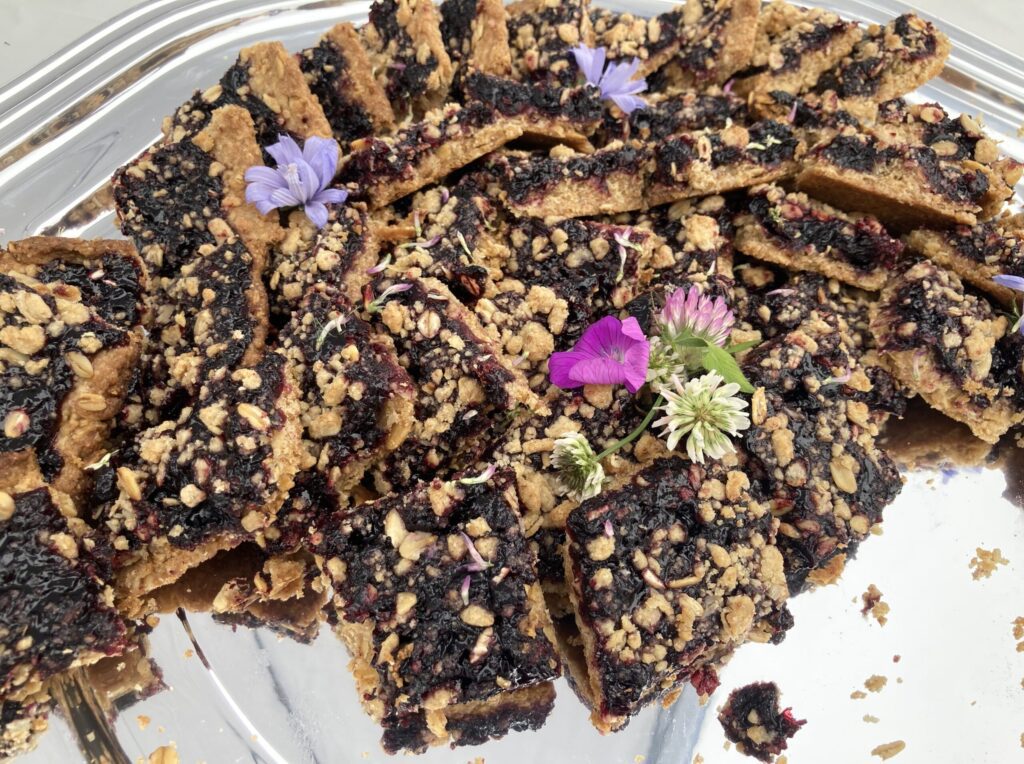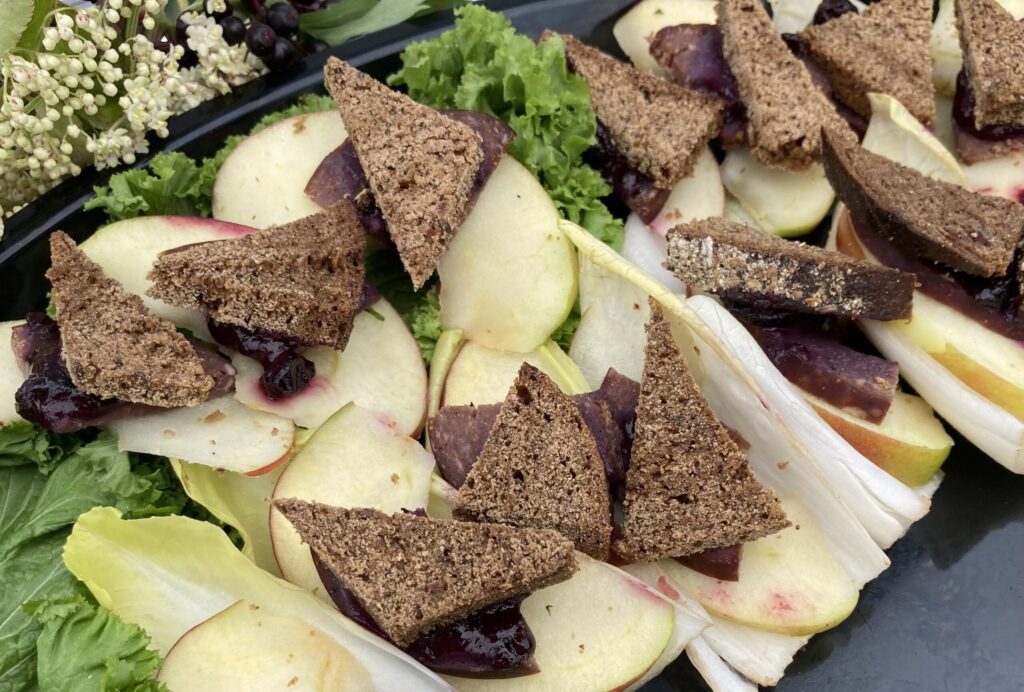As we enter the holiday season, many of us begin thinking about food and cooking – and what to do with perennial crops as they go from farm to kitchen. In the latest Perennial AF podcast episode, we listen back to a conversation between cooks with a passion for perennial ingredients, and invite you to think about the journey that perennial foods make “from soil to palate”.
This webinar features:
- Beth Dooley, a Minneapolis-based cookbook author
- Linda Hezel, owner and operator of Prairie Birthday Farm near Kansas City
- Rick Mullins, executive chef of Café Sebastienne in Kansas City
- Taylor Neff, an arborist and apprentice at Linda Hezel’s farm
Greg is now working to launch a podcast for the Dairy Grazing Apprenticeship, a nonprofit organization that helped inspire our own Agroforestry Apprenticeship Program.
But Greg is more than a former farmer and aspiring podcaster. He’s also a writer, poet, painter, and musician. Greg and I already knew each other from some of our past work in the grazing world, so I started by asking him what he’s been nerding out about lately.
Content has been edited for brevity and clarity.
Beth: Can you describe a time when sharing your story with someone had a direct impact on their vision of our food system?
Rick: It’s a daily thing. Our guests come in and a lot of times they’re weirdly intimidated by the menu, even though it’s a simple menu – I think they’re more intimidated by the idea of ingredients they’re not familiar with. I’m the type of cook – chef – I prefer “cook” – I like to spend time in the dining room speaking with people. And so every opportunity I get, I share new ingredients, local ingredients, wild ingredients with people. It’s kind of become one of my things.
Taylor: I go to Linda’s farm on Fridays, so I’m there on harvest days, and we have to get stuff ready to take to Rick… (Laughs) So I’ve learned how I can find food in my yard outside of my garden, how I have things like chicory and henbit and lambsquarters, all these things that can help sustain me really in a nutrient dense way without intense cultivation.
Linda: I like to tell people about the Concord grape vines I got from my uncle, who used to truck farm outside St. Louis in the fifties. He asked me once while I was visiting him if I wanted grape vines, and I said “sure!” and he disappeared behind his house and brought out vines and said “here, stick these in the ground, they’ll grow,” and of course they did, and I’ve tried to reproduce that many times and haven’t been able to. And so I’m mad at myself cuz I didn’t say “wait a minute, take me with you! Show me what you did,” and I’m mad at him because he didn’t say “here, come with me, I’ll show you how to do this.”
So I share that story with all my tour guests, and I had an artist actually go back to Indianapolis and learn how to make wild persimmon pudding with her grandmother because of that story. So I encourage everyone to learn from elders. Don’t let them take their information with them.

Beth: Let’s brainstorm what we would make everyone for dinner if they were here! Taylor, do you want to start?
Taylor: Are there any parameters here? How about something with beets?
Beth: And what do you want to do with them?
Taylor: Oh, I have to say? I just thought we were going to list all these for Rick and he was going to have to figure it out!
Linda: I have ground nut. I planted it in the wrong place! It’s taking over my back yard… But I’m okay with that because it loves it there and it hasn’t thrived in the other places I’ve planted it. So I have tubers that I dug before it froze. You have to cook them and peel them, but I think they’re actually better than potatoes. I would boil them, peel them, and mash them. I also have dried spice bush, and it’s one of my new favorite native plants. Almost every part of the plant is edible, and it’s beautiful as a landscape plant.
Beth: That’s what people don’t realize is they’re walking over so much food every day, without paying attention to it!
Rick: Right now, sweet potato soup is my thing. Sweet potato soup with some pickled rose petals from Linda. Pour vinegar over rose petals and let them sit. That’s all you have to do. The vinegar turns an absolutely gorgeous color.
Beth: Nice. Those sound amazing!
Alright everyone – go get some really good food and cook!


